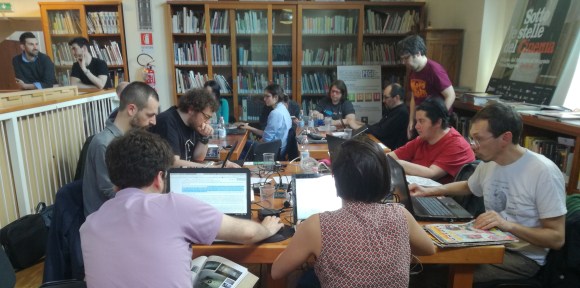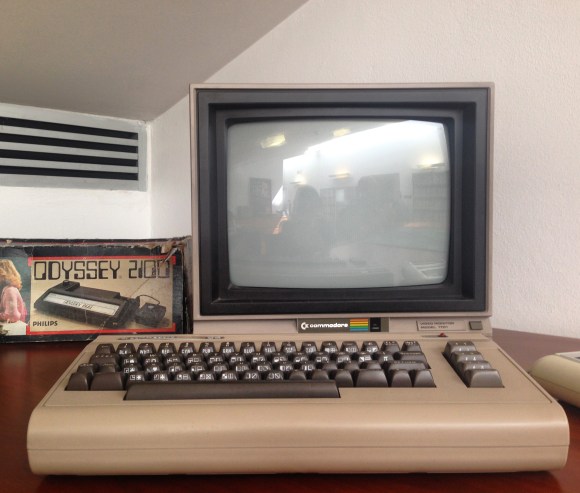
Archives, the repositories of primary sources for everything from businesses to governments to churches, are usually full of dead-tree paper hard copies. By their very definition, they’re dead.
But archivists and curators see things differently, especially those at the Archivio Videoludico (Video game archive) of the Cineteca di Bologna. Access to the institution is open to the public and free of charge, which they believe keeps it “alive”—the ongoing study and research can give sources a “new life” by exposing them to new audiences.
With this in mind, the archive decided to collaborate with Wikimedia editors to put on an edit-a-thon devoted to the history of video gaming. What better chance to give their content new life than by sharing them with a wider audience? From a very small audience, maybe a single researcher, to a huge one—Wikipedia.
The archive, located in the Northern Italian city of Bologna, was established in 2009 as a space for safeguarding the history of gaming, to archive and promote videogaming topics, and analyze and study the social and cultural importance of the medium. As of 2017, the archive contains more than 5,000 titles and 34 gaming platforms that users can access, along with books, dissertations, movies, and magazines about video games.
Fifteen people—more than half of which were women—gathered for the tour at the Cineteca. Anna Fiaccarini, the head of the Foundation’s library and non-film archives, showed us pictures from the early 1900s, paintings for movie posters, and even drawings of never shot scenes from Chaplin’s The Great Dictator. Participants were a mixed audience of old-school Wikipedians, video games scholars, and enthusiasts. Some traveled for up to three hours to join the event.
By the end of the edit-a-thon, thirteen articles had been modified, with more than 60 new references added.
Back in 2005, when some of the articles modified by the participants were created, there were very few reliable sources for video games available online and in Italian. Twelve years later, magazines are available and indexed at the Archivio Videoludico, allowing us to complete and expand those articles by adding sources in the reader’s language.
———
Irene Rubino was one of the participants in the edit-a-thon, and had one of the longest travel times of anyone there (about three hours from her hometown, Pisa, to Bologna). “I had quite the experience,” she said. “It was my first approach to Wikipedia as an author of its contents. I was already familiar with the free encyclopedia, of course … but being behind the scenes is oddly different. Besides, it was fun and also a chance to learn something new.
“Writing for Wikipedia is no different from ‘ordinary’ research work, except that everyone is able to read what you write without having to buy extraordinarily expensive peer-reviewed journals,” she added. “It’s a fairly more democratic approach to knowledge.”
“I had never seen a Commodore 64 (an 8-bit home computer from the early 1980s) before, so I was thrilled at first,” Rubino said. “We were given several game reviews and also a complete sitography to browse. However, I often got lost in the process: different ideas kept popping up page after page.”

For example, Rubino said she found herself reading the latest IGN issue about The Legend of Zelda: Breath of the Wild while writing about The Dig, the classic sci-fi point-and-click adventure. She said it reminded her of the labyrinth described by the well-known semiotician Umberto Eco.
“I also discovered the article I had chosen was written by our tutor, Giuseppe Profiti,” Rubino said. “At first I felt somewhat embarrassed. Then I realized that for the first time I had the chance to interact with the author of a page I was editing. You could never do that with a print encyclopedia.”
Rubino was intrigued by the high number of women who participated. A study published in September 2014 by the Internet Advertising Bureau shows that 52 percent of the gaming audience is made up of women.
“Too bad women are still largely absent in the industry, both as creators and characters of video games,” Rubino said. “Taking notice that not only women play videogames, but show an active interest in writing about them too, could be a first step towards a more equal approach.”
“I’ve always been interested in video games, so reading and writing about them felt almost natural … somehow like a second skin,” Rubino added. “Of course, I am looking forward to the next Wikimedia project. I think it should involve as many nerds—I mean, people—as possible. I suggest the organizers give participants more time to research and write and especially to talk to each other. Most of the time we worked on our own without coordinating.”
Andrea Dresseno, Curator, Archivio Videoludico
Giuseppe Profiti, Wikipedia editor and Wikimedia Italy member
Thanks to Michelle Fitzhugh-Craig for her assistance with this piece. Learn about how the Wikimedia community partners with heritage institutions to share their knowledge and collections with the world at glamwiki.org.

Can you help us translate this article?
In order for this article to reach as many people as possible we would like your help. Can you translate this article to get the message out?
Start translation